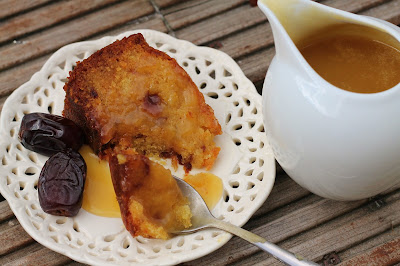I can’t wait to be 90. I really can’t. Assuming that I make it that far (with all my faculties intact!) and that the retirement age hasn’t been raised to 126 by then – admittedly, both fairly big assumptions to make - my plan is to sit at home all day watching Christmas films (even if it’s mid-summer. That’s right, ‘Elf’ in June. Just try to stop me, I‘ll be 90, like I'll care), sipping on endless cups of tea and making my way through as many slices of cakeage a day as I can manage (what is it with getting older and eating cake? They just seem to come hand in hand).
Honestly,
sometimes I wonder if I’m already a 90 year-old stuck in a younger person’s
body, particularly when it comes to my sweet tooth. It knows no
bounds. Take today: thus far my nutritional intake has consisted of
biscuits, caramel popcorn, a few token pieces of fruit and an obscene amount of
chocolate. And this is no exception, I’ve always been this way: I end
every single day, without fail, with something sweet; I choose - and reject -
restaurants based on their dessert menus; and once, during a meal at an
all-you-can-eat buffet restaurant, I actually started with dessert - a hefty
slice of double chocolate fudge cake.
How
I have survived this long without needing any fillings is beyond me. No
doubt I will get my comeuppance one day, but I figure at that point the inner
nonagenarian in me will simply embrace dentures. As long as I can still
manage a slab of cake, it’s all good right?
And
yet, recently strange goings-on seem to be afoot. I have a new-found love
you see... goat’s cheese. I am freaking obsessed with the stuff and
my love for it is so far-reaching that after almost two years of blogging only
about sugary baked goodness – cue fanfare - I am finally posting a savoury
bake! Yip, told you, strange happenings indeedy.
I don’t know if this will set a precedent on ‘A Cup of Tea Solves Everything’ - there are far too many cookie, cake, chocolate and biscuit baking ideas running around in that tiny little mind of mine – but for now, let’s take a moment to enjoy this post in all its glory, because believe me, these croissants truly are glorious. Even people who were sceptical about goat’s cheese loved them, that’s how good they are. And if you think your own taste-testers might be put off by the filling, do what I did and don’t tell them what's inside until after they’ve eaten the croissants. By that time I promise you, they’ll be hooked.
I don’t know if this will set a precedent on ‘A Cup of Tea Solves Everything’ - there are far too many cookie, cake, chocolate and biscuit baking ideas running around in that tiny little mind of mine – but for now, let’s take a moment to enjoy this post in all its glory, because believe me, these croissants truly are glorious. Even people who were sceptical about goat’s cheese loved them, that’s how good they are. And if you think your own taste-testers might be put off by the filling, do what I did and don’t tell them what's inside until after they’ve eaten the croissants. By that time I promise you, they’ll be hooked.
Makes 20-24 large croissants
Technical Notes:
Technical Notes:
- The croissant dough I've used is the same one I used in my Bourke St Bakery croissants post but I have reduced the amount of sugar in the dough to account for this being a savoury bake.
- If you’re not sure about goat’s cheese, you could substitute it for any other soft cheese really (Roule, Boursin, Philadelphia), but if you get a really mild goat’s cheese, trust me, it's so creamy, it works perfectly with the Kalamata olives and thyme!
- You can egg-wash your croissants just the once - after proving, before they go in the oven - but I do it twice: once immediately prior to proving and once after, and I would highly recommend you do the same. It gives the pastries a much deeper golden colour once baked.
- If you haven’t made croissants before, the two pieces of advice I would give you are: allow yourself plenty of time to make them; and don’t be afraid – they’re time-consuming but not difficult, and so completely and utterly worth it.
Ingredients (croissant dough recipe adapted from Bourke St Bakery)
Dough (chill everything in the fridge before you start making the dough, including the flour and sugar):
For the filling:
Ferment (this is a small amount of dough that needs to be made first and will help your croissant dough develop and rise):
- 100g plain flour
- 55ml whole milk
- 5g (or 1 tsp) brown sugar
- A pinch of salt
- 5g fresh yeast (I bought mine from the bakery counter at Tesco. Alternatively, use 1 tsp dried instant yeast)
- 20g unsalted butter, softened
Dough (chill everything in the fridge before you start making the dough, including the flour and sugar):
- 935g strong white flour
- 500ml whole milk
- 25g brown sugar
- 15g salt
- 35g fresh yeast (or 2 tsp dried instant yeast)
- Plus 500g unsalted butter, for laminating (the rolling and folding process for the dough) - use good quality French butter if you can, it makes a difference
For the filling:
- 450g soft, mild goats' cheese
- 150g Kalamata olives, pitted and chopped roughly
- Thyme leaves (the quantity depends on your personal preference but I probably stripped the leaves from about 20 sprigs for my filling)
- 1 egg
- 80ml milk
- Pinch of salt
- Thyme leaves
To make the ferment
You can make the ferment up to three days in advance of using it and just store it in the fridge in the meantime. At the very least it needs to rest in the fridge for two hours, or even overnight, before being used to make your dough.
Put all of the ferment ingredients into a bowl and, using your hands, bring the ingredients together until they begin to form a dough ball. Remove the ball from the bowl and knead it for 10 minutes on a clean surface, until you have a smooth, elastic dough.
If using an electric mixer, put all the ingredients into your mixer bowl and process on a low speed for 3-5 minutes, until you have a smooth, elastic dough.
Once you have your elastic dough (using either method), shape it into a ball and leave in a bowl at room temperature for 2 hours, then cover the bowl with clingfilm and refrigerate for a minimum of two hours or until ready to use.
To make the croissant dough
Once you've made the dough, like the ferment, it needs to rest for at least two hours, or preferably overnight, before it is laminated and shaped so take this into account with your baking. You could make it the same day as the ferment, but you can only do so once your ferment has chilled in the fridge for a couple of hours.
If using an electric mixer, put the flour, milk, sugar, salt, yeast and your chilled ferment in the bowl of a mixer fitted with a dough hook (note, the butter for laminating should not be added here!) Process on a low speed for 3-4 minutes, then increase the speed to high and mix for a further 2 minutes.
If making by hand, bring the ingredients together in a bowl first and then knead by hand on a clean surface for 10-15 minutes, until you have a smooth, elastic dough.
If making by hand, bring the ingredients together in a bowl first and then knead by hand on a clean surface for 10-15 minutes, until you have a smooth, elastic dough.
Gather the dough into a ball, put it into a clean plastic bag and refrigerate for at least 2 hours, or preferably overnight.
Laminating the dough
Laminating and shaping the dough will take about five or so hours in total, including rest periods for the dough.
Remove dough from the fridge, together with the butter – both should be about the same temperature.
Put the butter between two sheets of baking paper and use a rolling pin to gently pound the butter into a 20cm square about 1cm thick.
Using a lightly floured rolling pin (or even better, a silicone rolling pin - trust me, this makes life so much easier!), roll the dough out into a 20 x 40 cm rectangle. Remove the butter from between the baking paper and place it in the centre of the dough, then fold the two sides of pastry over the top of the butter, pinching them together at the ends and all along the seams to ensure the butter is completely enclosed in the pastry.
Next, carefully roll the pastry out again, this time into a rectangle about 20 x 90 cm. Fold one 20cm end of the rectangle in by one third, then fold the other 20cm end over the top (like folding a letter) so the dough is now 20 x 30 cm. Put your dough back in its plastic bag, (or wrap it in clingfilm), place it on a tray and refrigerate for 20 minutes to allow the gluten to relax.
Repeat this rolling and folding process two more times, ensuring that before rolling the pastry for the second and third time, you rotate it by 90 degrees (so that the dough is rolled in a different direction to the previous fold as this is how you create the flaky layers of pastry), and that you rest the dough in the fridge again (in its plastic bag) for 20 minutes after each of the second and third ‘turns’ (folding and rolling).
Making the filling
Whilst the dough is resting in the fridge for the final time, make the filling by tipping the goat's cheese, chopped olives and thyme leaves into a bowl and stirring together to incorporate.
Shaping and filling the dough
Once the dough has had its third and final 20 minute rest in the fridge, roll it into a 25 x 120 cm rectangle. This can take some effort as the dough will resist being rolled out, but persist, you’ll get there. Use a light sprinkle of flour to patch up areas where there may be butter poking out while you roll.
Using a ruler, along the bottom long side of your rectangle, use a knife to make a small cut every 9cm. Across the top long side of your rectangle, first make a small incision at 4.5cm and then at every 9cm after that, so that the top incisions are directly in the middle of the ones across the bottom.
Line your ruler up between the first bottom incision and the first top incision. Use a knife to cut along the line. Then rule from that same top incision to the next bottom incision and cut along that line so that you have cut out triangle. Continue all the way along the pastry with the remaining incisions. You’ll end up with about 24 triangles, plus two half triangles (ball these together and keep the dough ball in a small bag in the fridge, you may want it when filling the croissants).
Stack the triangles on a tray lined with baking paper, cover lightly with a clean tea towel and put in the fridge to rest for about 10-20 minutes.
Remove from the fridge and, working one triangle at a time, make a small incision at the mid-point of each triangle’s base. Gently pull the two corners of pastry that are either side of your incision outwards and pull the tip of the triangle upwards to elongate it as much as possible.
Place a heaped teaspoon of the goat's cheese filling at the base of the triangle, just above the incision. If you're worried about the filling leaking out, this where your leftover dough can be used: take a small amount and roll two thin sausage shapes, no more than 2cm in length. Place one each side of the filling to act as a sort of cushion.
Now roll the base of the croissant up over the filling and then continue to roll towards the tip of the triangle, stretching the tip out further as you get closer to it. Once the triangle is fully rolled, press the tip into the croissant to secure, and place the croissant, tip-side down, back onto the tray lined with baking paper. Repeat with remaining triangles, spacing them well apart on the tray (I place 5-6 croissants max on each tray).
If you want to, you can now prove the croissants immediately for baking, or cover them with a clean tea towel and refrigerate overnight for proving and baking the following day. Alternatively freeze for later use.
Proving and baking
Before the croissants can be baked, they need to prove (or rise). If they’ve been in the fridge overnight, remove them from the fridge.
Make your egg wash by beating the egg, milk and salt together in a bowl. With a pastry brush, brush the wash over each croissant then cover them with a fresh, damp tea towel and leave them in a warm place for 2 – 2.5 hours until they have more or less doubled in size (if you are proving straight away after rolling i.e. your croissants are not chilled, you will need only 1.5 – 2 hours for proving. If proving croissants from frozen, prove for 2.5 - 3 hours).
Make your egg wash by beating the egg, milk and salt together in a bowl. With a pastry brush, brush the wash over each croissant then cover them with a fresh, damp tea towel and leave them in a warm place for 2 – 2.5 hours until they have more or less doubled in size (if you are proving straight away after rolling i.e. your croissants are not chilled, you will need only 1.5 – 2 hours for proving. If proving croissants from frozen, prove for 2.5 - 3 hours).
Once the croissants are almost at the end of their proving time, preheat your oven on as high a temperature as it will go.
At the end of the proving time, brush the croissants again with the egg wash, sprinkle with a few thyme leave and place in the oven, reducing the temperature immediately to 190C (175C for a fan oven).
Bake for 19-20 minutes, until they are a beautiful golden colour (they should almost look burnt. The further baked they are, the more they will rise and the better the layers of flakiness). Remove from the oven and allow to cool slightly before eating.
.JPG)
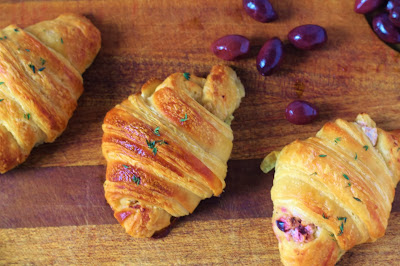

.JPG)
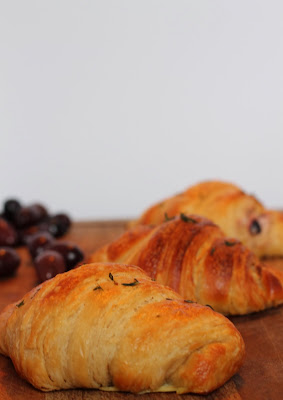
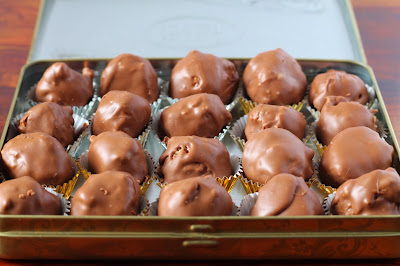

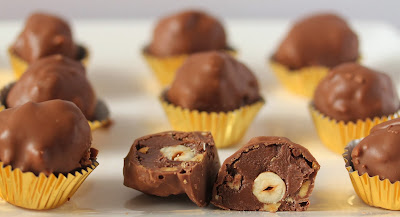


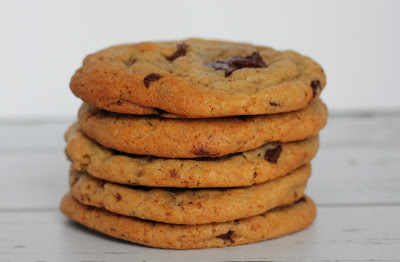
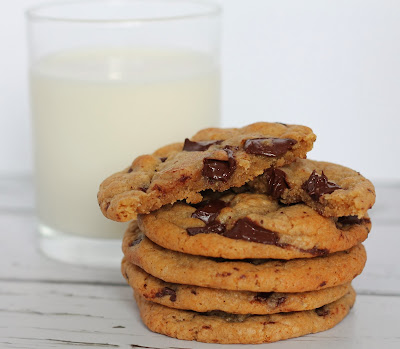


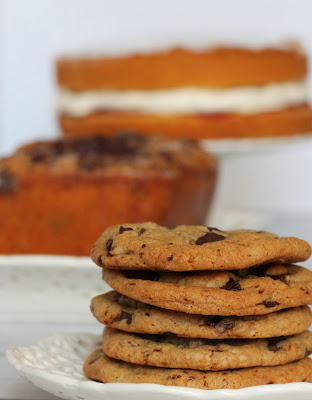
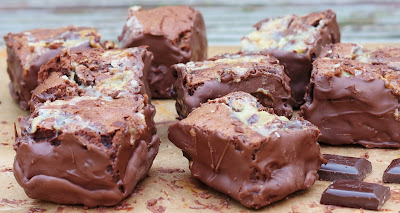

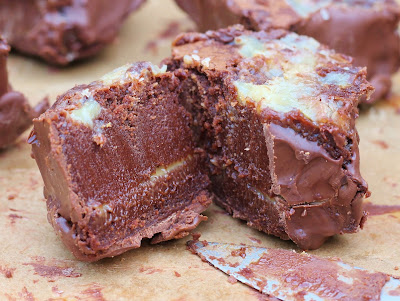
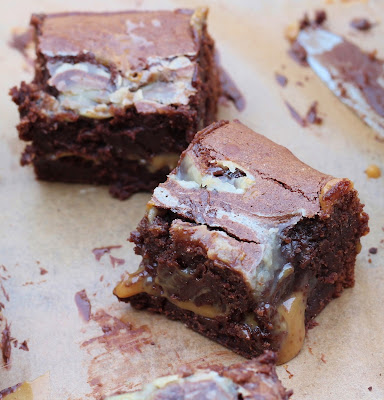

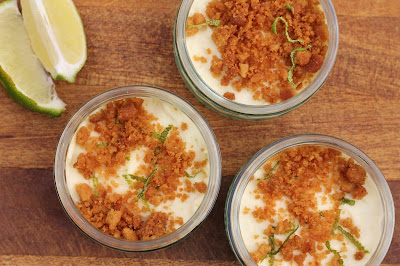


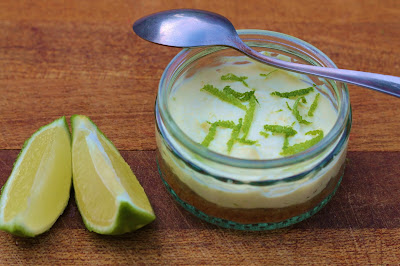
.JPG)
